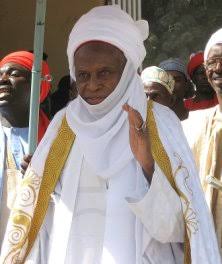“Change is the only constant in life,” -ancient Greek philosopher, Heraclitus.
The Danfodio Jihad, led by Usman Dan Fodio in the early 19th century, had several prominent flag bearers. These individuals were given flags by Usman Dan Fodio as symbols of authority to lead the jihad in different regions. The most notable flag bearers include:
1. Muhammad Moyijo – Kebbi
2. Abu Hamid – Zamfara
3. Ummaru Dallaji – Katsina
4. Mallam Musa – Zauzau
5. Mallam Isiyaka – Daura
6. Mallam Suleiman – Kano
7. Buba Yaro – Gombe
8. Mallam Alimi – Ilorin
9. Mallam Dendu – Nupe
10. Mallam Yakubu – Bauchi
11. Modibbo Adama – Adamawa
12. Mallam Zaki – Katagun
13. Mallam Sambo – Hadejia
14. Mallam Dantunku – Kazaure
15. Muhammad Manga – Misau
16. Muhammad Wabi – Jama’are
17. Muhammadu Namoda – Kauran Namoda
18. Sambo Dan Ashafa – Yan’Doto
Over time, these scholars and leaders, along with their territories, evolved from jihad leaders and scholars to traditional authorities—‘The Native Authority’—which the British later integrated into their indirect rule system. Emirs in the northern emirates wielded substantial power over their territories, overseeing local administration, tax collection, law enforcement, judicial authority, and maintaining order.
In 1976, during local government reforms under General Yakubu Gowon’s administration, the Native Authority system was formally replaced with a standardized, democratic local government structure across Nigeria.
Initially, emirates and chiefdoms in Nigeria had no graded ranks—only First Class Emirs, Chiefs, and Hakimis or Dakacis. Over time, a grading system (First, Second, and Third Class) was introduced, which the emirates, chiefdoms, and their people adapted to.
These territories witnessed the creation of states and local governments and emergence of new emirates and chiefdoms. For instance, Gombe State now has nine first-class emirs:
1. Abubakar Shehu-Abubakar: Emir of Gombe and Chairman of the State Council of Emirs and Chiefs
2. HRH Alh. Abdulkadir Haruna Rasheed: Emir of Dukku
3. Muhammad Kwairanga Abubakar: Emir of Funakaye
4. HRH Ahmad Usman Mohammed: Emir of Deba
5. Umar Muhammad Atiku: Emir of Akko
6. HRH Alh. Adamu Haruna Yakubu: Emir of Pindiga
7. HRH Alh. Umar Abdulsalam: Emir of Gona
8. HRH Alh. Muhammed Dadum-Hamza: Emir of Nafada
9. HRH Alh. Abubakar Ali: Emir of Yamaltu
Gombe State also has five chiefdoms: Mai Tangale, Folo Dadiya, Mai Kaltungo, Mai Tula, and Dala Waja. The Tula Chiefdom, carved out of the Kaltungo Chiefdom, was created in 2001 by the Gombe State House of Assembly.
Similarly, Bauchi State has six first-class emirs: Bauchi, Katagum, Misau, Jama’are, Ningi, and Dass.
Borno, which was not part of the Danfodio Jihad, has eight emirates: Borno, Bama, Damboa, Dikwa, Biu, Askira, Gwoza, Shani, and Uba. The Uba Emirate was created in 1976.
The Kano Emirate has experienced the creation and abolition of emirates by successive governments. Governor Abubakar Rimi established new emirates in 1979, reversed by Governor Sabo Bakin Zuwo in 1983. Governor Abdullahi Ganduje recreated them, only for Governor Kabir Yusuf to reverse the decision-Governor Kabir Yusuf, on June 16, 2024, signed the bill creating Gaya, Rano, and Karaye as second-class emirates within Kano State. In essence, the Kano Emirate has navigated these changing times, which is inevitable!
As of April 25, 2023, there are 28 first-class traditional rulers in Nasarawa State. In April 2023 Governor Abdullahi Sule announced the elevation of the status of 22 traditional rulers in the state.
Taraba State has 56 graded chiefs: 6 first-class, 9 second-class, and 40 third-class. Former Governor Darius Ishaku created 9 of the traditional chiefs.
Emirates and chiefdoms have transformed, their people have evolved, and their geography has been altered. Some were established during the Danfodio Jihad, others through historical processes, and some by administrative laws.
The Sardauna Province, with its emirates and chiefdoms in both Adamawa and Taraba states, is a product of recent history, created after the United Nations referendum of February 11, 1961, in which 59.97% voted to join Nigeria. Sir Ahmadu Bello promised that those who joined Nigeria would be granted a separate province with benefits similar to those of Northern Nigerians- thus the present emirates and chiefdoms in the province.
Leaders with foresight not only accept change but also encourage and push for it. It was reported that when the administration of former Governor Boni Haruna of Adamawa State considered upgrading the Hama Bachama, Gangwari Ganye, Emir of Mubi, Amna Shelleng, Murum Mbula, and Kwandi Nunguraya (Chief of Lunguda Kingdom) to first-class status, the late Lamido Aliyu Mustapha also advised and encouraged the upgrading of the Hama Bata. Surprisingly, the late Lamido Aliyu Mustapha was the only first-class Emir in Adamawa State at the time, and his emirate was one of the largest in the Danfodio Dynasty, spanning parts of Cameroon, Chad including Central Africa
When Governor Ahmadu Umaru Fintiri announced the appointments of emirs and chiefs for two newly created emirates and four chiefdoms, some people questioned the appointment of His Royal Highness Sani Ribadu as the new Emir of Fufore Emirate. They overlooked and forgotten the fact that emirates and chiefdoms have evolved. Individuals without royal lineage have become kings, emirs, and chiefs. Traditional titles are now more accessible, and the role of kingmakers has also evolved, with emirates and chiefdoms determining their kingmakers. Emirates, chiefdoms and kingdoms have evolved, their territories have transformed, and their people have embraced the inevitable changes of time.
Zayyad I. Muhammad writes from Abuja, zaymohd@yahoo.com, 08036070989
s


